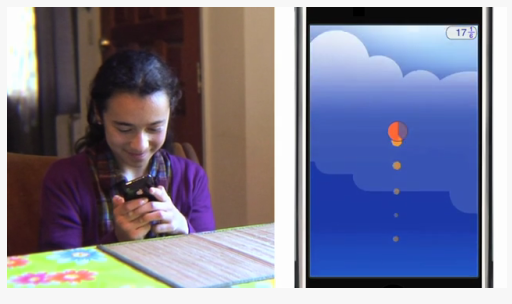Take, for example, the creators of Motion Math, available on the iPhone and iPad. The founders, Jacob Klein and Gabriel Adauto, graduate students in the Learning, Design, and Technology program at Stanford, are both 32 years old. They're bringing their background in education and cognitive science to the design of the game.
Certainly having a deeper understanding of cognition helps. But Klein and Adauto are also gamers -- "hardcore," says Klein. And it's clear they've built games based on "things we'd like." It's scaled down, so that the game is playable by elementary school-age children. But it's not dumbed down -- in content or in gameplay.
Klein says the inspiration in part came from the iconic Mario Brothers: simple yet fun. I'd add that it's a game for any age -- a third grader struggling with fractions could enjoy the game, as much as a seventh grader, or an adult. Klein also points to the design and the flow of sports-related video games. These "flow experiences," says Klein, mean that the entire game keeps you continually engaged. And in the case of Motion Math, that engagement is with on-task learning.
At the moment, the games mostly focus on fractions, a notoriously difficult concept for children to grasp. Fractions are often taught with the pie metaphor -- how many slices are half, for example. But that graphical representation actually does little to help students understand how fractions work and how they're related to percentages and to the number line.
The game aims to helps students develop this number sense and estimate fractions -- and estimate quickly. It's a game, after all! This is how it works: Players control a bouncing star, and the goal is to make that star land on the right part of the number line, matching a particular fraction. To do this, the app uses the gyroscope that's built into the Apple mobile devices, so you have to tilt your device.
Motion Math has won rave reviews from those who are watching the industry closely. The Children's Technology Review, for instance, gave the app 4.5 stars for being able to "bridge the concrete and the abstract." The creators plan to expand to other platforms, including Android soon. Klein says they'll also add new subject areas beyond fractions and even beyond math.


